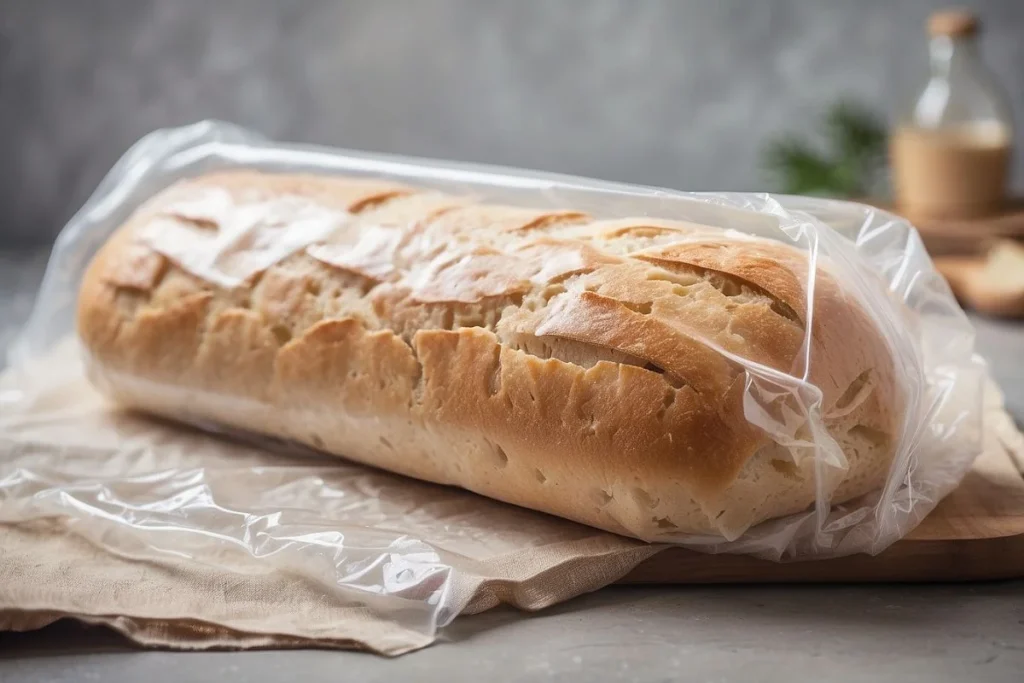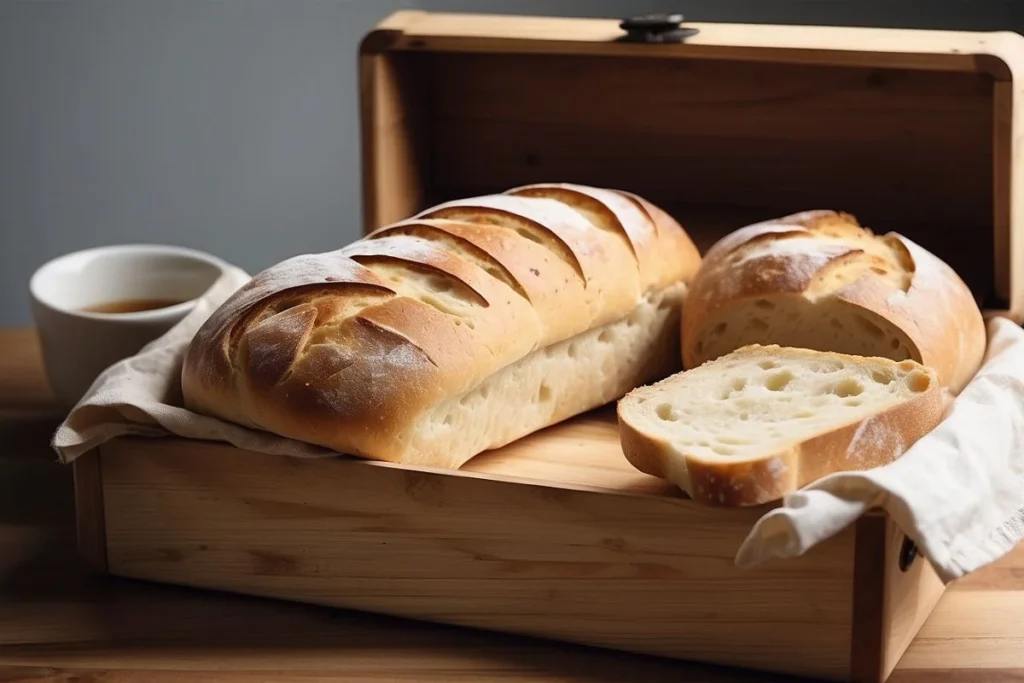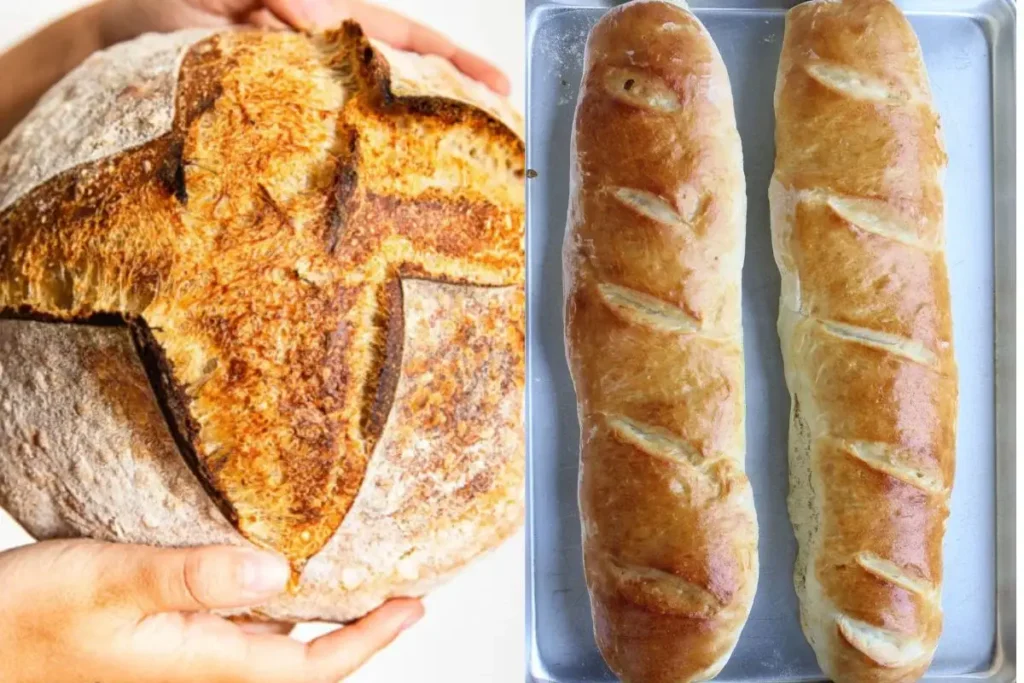
5 Simple Tips to Make Your Ciabatta Bread Last Longer
We all love the smell of freshly baked ciabatta bread, but what do you do when it starts getting stale after just a day or two? Say goodbye to dry and crumbly loaves because we’ve got the ultimate guide to keeping your ciabatta bread fresh for longer.
In this article, we’ll give you five simple tips to make sure your bread stays delicious.
Whether you’re a home baker or own a bakery, knowing how to make your ciabatta bread last longer is key. By following these tips, you’ll be able to enjoy your crusty and soft loaf for days.
Get ready to impress your family, friends, or customers with your expertise in keeping ciabatta bread fresh—no more wasted loaves or disappointments at breakfast!
Table of Contents
Toggle3 Main Reasons Why Your Homemade Ciabatta Bread Doesn’t Last Longer
Many homebakers cherish the goodness of homemade ciabatta bread, but sometimes it falls short in the staying-fresh department. Let’s dig into the three main reasons that might be affecting how long your homemade ciabatta stays delicious.
1. Quality Ingredients Matter
For top-notch ciabatta, start with top-notch ingredients. The first reason your bread might not last long is if you use low-quality flour or expired yeast. Get the best flour you can find, preferably high-protein bread flour for that perfect chewy texture.
And always check the expiration date on your yeast. Fresh, active yeast is key for proper fermentation, which makes for a better structure and longer-lasting freshness.
2. Don’t Rush the Fermentation Process
The unique texture and flavor of homemade ciabatta come from a slow and steady fermentation process. But if you rush this crucial step, it can lead to a shorter shelf life. During fermentation, yeast and bacteria team up to give the dough its awesome flavor and structure.
Don’t cut corners on this – proper fermentation not only makes it taste better but also helps the bread stay fresh for longer. Try experimenting with longer fermentation times to boost your ciabatta’s staying power.
3. Store it Right
Even with great ingredients and careful fermentation, freshness can slip away if you don’t store your ciabatta properly. Ciabatta is picky about where it hangs out, and improper storage can make it go stale faster.
Avoid the common mistake of tossing ciabatta in the fridge. It might seem like a good idea, but the cold makes the bread go stale quicker. Instead, keep it at room temperature in a bread box or a paper bag. These let the right amount of moisture in, so your bread doesn’t dry out or get too moist.
Also, don’t seal your ciabatta in plastic before it cools completely. This can trap too much moisture, making it soggy and inviting mold. Make sure your bread is completely cool before storing it, and use a breathable container for the best results.

How To Make Your Ciabatta Bread Last Longer | 5 Expert Tips
Ciabatta bread, with its crusty exterior and light inside, is a beloved Italian classic. However, its fantastic texture and flavor might not last long if you don’t store and handle it correctly.
If you want to keep your ciabatta bread fresh for a more extended period, try these five expert tips.
Tip 1: Storing Ciabatta Bread Properly
To keep ciabatta bread fresh, start with proper storage. Use a breathable container or a paper bag to prevent moisture and staleness. Avoid airtight containers because they can trap moisture and mess with the bread’s texture. If you’ve sliced the ciabatta, wrap it tightly in plastic wrap or aluminum foil to reduce exposure to air.
Storing ciabatta at room temperature is best for maintaining its texture; refrigeration can make it go stale faster. If you won’t eat the bread within a few days, freezing is an excellent option. Make sure to tightly wrap the ciabatta in plastic or aluminum foil before freezing to avoid freezer burn.
Tip 2: Using Natural Preservatives for Freshness
While ciabatta is best fresh, natural preservatives can help it last longer. Olive oil, a staple in many ciabatta recipes, adds flavor and acts as a natural preservative. Brushing a thin layer of olive oil on the crust creates a barrier against moisture, preventing sogginess.
Herbs and spices like rosemary, thyme, or garlic not only enhance flavor but also preserve ciabatta. These additives have antimicrobial properties that inhibit mold and bacteria growth. Consider adding them to the dough or brushing them on the crust before baking for added protection.
Tip 3: Packaging Strategies for a Longer Shelf Life
How you package ciabatta affects its freshness over time. A bread box with ventilation holes regulates airflow and prevents excessive moisture or dryness. Alternatively, use a cotton bread bag to let the bread breathe while protecting it.
For sliced ciabatta, store it individually in a resealable plastic bag to maintain freshness. Remove as much air as possible before sealing to minimize exposure to oxygen, which speeds up staling. Seal the bag tightly after each use to preserve the bread’s quality.
Tip 4: Controlling Humidity Levels
Ciabatta’s texture depends on its moisture content. To preserve this moisture and prevent the bread from becoming dry, control humidity in your storage area.
In a dry climate, place a small bowl of water in the storage container or bread box. The water releases moisture, creating a humid environment to keep the ciabatta soft. Be careful not to make the bread too moist, as excessive humidity can lead to mold growth.
Tip 5: Using a Rotation System for Freshness
A rotation system ensures that older ciabatta gets used first, preventing waste. When buying or baking a new ciabatta, place it at the back of the storage area so that older loaves are used first. This simple strategy helps you enjoy the freshest ciabatta while reducing the chances of any loaf going stale.

Common Mistakes To Avoid When Trying to Extend the Shelf Life of Ciabatta Bread
Now that you know why your ciabatta bread does not last longer, & we will also share expert tips on how to make it last longer. However, there are some common mistakes you have to avoid.
Ignoring Proper Cooling After Baking
One prevalent mistake is neglecting the crucial cooling process after baking. Ciabatta, like many bread varieties, continues to bake internally even after leaving the oven. Failing to allow the bread to cool completely before storage can result in trapped moisture, leading to a soggy interior or accelerated staling.
Tip: Patience is key. Allow your freshly baked ciabatta to cool on a wire rack for at least an hour before contemplating storage. This ensures even cooling and preserves the desired texture.
Exposing Ciabatta to Excessive Air
While ciabatta benefits from some airflow to maintain its crustiness, too much exposure to air can have adverse effects. Storing it without proper protection can lead to rapid drying, making the crust overly hard and the interior less appealing.
Tip: Invest in a bread box, use paper bags, or wrap the ciabatta in a clean kitchen towel to strike a balance between airflow and protection. Avoid leaving it exposed on countertops for extended periods.
Inadequate Sealing During Freezing
Freezing ciabatta is an excellent way to prolong its freshness, but improper sealing can result in freezer burn and a compromised taste. When air finds its way into the packaging, it can lead to dehydration and a less-than-optimal eating experience.
Tip: Double-check the airtightness of your chosen packaging for freezing. Use plastic wrap, aluminum foil, or freezer bags to ensure no air can penetrate, preserving the bread’s original moisture content.
Storing Ciabatta in the Refrigerator
Refrigeration might seem like a logical choice for extending the shelf life of many foods, but it’s a mistake when it comes to ciabatta. The cold temperatures can accelerate the staling process and alter the bread’s texture.
Tip: Stick to room temperature storage for ciabatta. If you’ve frozen the bread and want to thaw it, do so at room temperature to maintain its intended consistency.
Using the Wrong Storage Containers
The type of storage container you choose can significantly impact the shelf life of ciabatta. Containers that trap excess moisture or allow too much airflow can lead to mold growth or accelerated staling.
Tip: Opt for containers designed for bread storage or use breathable options like paper bags for short-term storage. Ensure any container used for freezing is explicitly labeled as freezer-safe.
Neglecting Regular Checks and Rotations
For those with a habit of buying or baking ciabatta in bulk, neglecting regular checks and rotations can lead to unintentional waste. Older loaves might go unnoticed, resulting in a less-than-fresh experience.
Tip: Implement a rotation system, placing newly acquired or baked ciabatta at the back and using older ones first. Regularly check the freshness and discard any loaves that have surpassed their prime.

How long Does Ciabatta Bread Last?
How long your ciabatta bread stays fresh depends on a few things. If you keep it in a breathable container at room temperature, it’s best to eat it within the first 2-3 days.
Don’t put it in the fridge, though, because that can make it go stale faster. If you freeze it and seal it up well, your ciabatta can stay fresh for a week or even more.
Just make sure to let it thaw at room temperature to keep that original texture. The kind of flour and ingredients you use also affect how long it stays good. To keep your ciabatta tasty and fresh, check it regularly and use good storage tricks like bread boxes or paper bags.
Final Thoughts
In short, keeping your ciabatta bread fresh boils down to using good ingredients, careful fermentation, and storing it right. Whether you’re baking at home or for a bakery, it’s crucial to invest in high-quality flour, make sure the fermentation is slow, and pick the proper storage containers.
Our five practical tips provide solutions, covering storage methods, natural preservatives, humidity control, and a rotation system. Steer clear of common mistakes like refrigeration, improper sealing when freezing, and using the wrong storage containers.
Keep in mind that how long your ciabatta stays fresh depends on factors like storage conditions and ingredient quality. With patience and attention to detail, you can enjoy the delightful crunch and softness of your ciabatta for a long time. Say goodbye to wasted loaves and hello to long-lasting freshness on your table. Happy baking!
Lindsey Mackenzie
About me
Hi there! I’m Lindsey Mackenzie, the founder of Bake Smartly. Baking has been my passion since childhood, growing up in my father’s bakery. With Bake Smartly, I’m excited to share my love for all things sweet and savory. Join me on this delicious journey as we whip up scrumptious treats and sprinkle joy into every bite!






